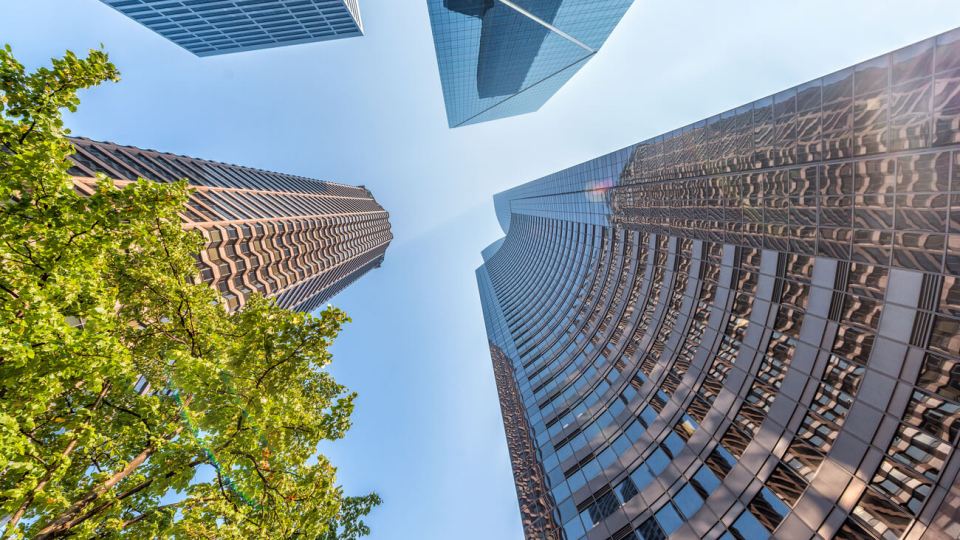June National Office Report: Western U.S. Office Vacancies Keep Rising, Manhattan Drops to 5th-Largest Sales Volume YTD
As distress in the office sector continues to play out, vacancies keep increasing in tech markets. The turmoil experienced by the tech sector in 2022 — combined with waves of layoffs — have contributed to softening demand, as evidenced by the latest CommercialEdge national office report. At the same time, peaking demand for life sciences space and a wave of new deliveries may lead to saturation in the sector.
Western Tech Hubs Continue Recording Highest Vacancies
Of the largest office markets tracked by CommercialEdge, San Francisco still has the highest vacancy rate at 25.2%, up 510 bps (basis points) year-over-year (Y-o-Y). Likewise, Seattle vacancies sit at 23% (up 350 bps), while those in the Bay Area rested at 20% in May (up 230 bps). Similarly high vacancies were recorded in Austin, Texas; Houston; and Dallas, underscoring the fact that the trio of Texas markets is experiencing the same drop in demand as those in the Western U.S.
At the same time, some markets are experiencing decreasing vacancy rates. For example, Nashville, Tenn., had a 15% vacancy rate after a 350-bps year-over-year drop. In the same vein, Tampa, Fla.’s vacancy rate stood at 13.1% (down 160 bps Y-o-Y), while Atlanta’s was 18.5% (down 90 bps).
The national vacancy rate rested at 17.8%, up 80 bps Y-o-Y.
Life Sciences Space Supply Faces Headwinds
As of the end of May, 83.8 million square feet of office space was under construction, equal to 1.2% of existing national stock. And, in the first five months of the year, 18.5 million square feet of office space was delivered across the U.S.
Much of the office development in recent years occurred due to ongoing demand for life sciences space, promoting a concentration of development in markets with robust life sciences scenes. Consequently, Boston — the nation’s foremost life sciences market — still has the largest office pipeline in the U.S. by far at 13.62 million square feet. Meanwhile, with a strong life sciences scene of its own, San Francisco was second with 5.17 million square feet, while Dallas was the only outlier on the podium with 4.75 million square feet under construction.
Still, there are signs that demand for life sciences has peaked. San Diego — one of the foremost life sciences hubs in the U.S. — saw ample development for the sector along its downtown waterfront. However, a potential surplus of lab space meant that a $1.6-billion facility in downtown San Diego is opening without any biotech tenants.
San Francisco Records Highest Vacancy in the West, Midwest Sees Lagging Rent Growth
At a regional level, CommercialEdge identified several trends. First, Western U.S. markets are experiencing increasing vacancies. San Francisco faces the steepest rise, alongside Seattle, Denver and even life sciences hotspot San Diego. Although San Francisco saw considerable artificial intelligence-related investment recently, that inflow of cash has yet to manifest in the city’s office market. The Bay Area also led the region in sales volume at $795 million year-to-date, followed by Phoenix with $496 million.
Next, the Southern U.S. was home to the market with the largest sales volume year-to-date in Washington, D.C., which saw just under $1 billion in office assets sold by the end of May. That said, it’s worth mentioning that several of the sales behind this figure involved distressed and dislocated properties, mostly attributed to low return-to-office percentages among government employees. Miami and Austin, Texas, led the region in terms of average asking prices at $49.08 per square foot and $42.48 per square foot, respectively. Austin also has the largest pipeline in the region at 4.4 million square feet underway, which is equivalent to 4.7% of the market’s current stock.
Notably, in the Northeastern U.S., Manhattan fell from first place in 2023 all the way down to fifth for sales volume, recording just $570 million in office sales year-to-date in 2024. Nevertheless, the market continues to lead nationwide asking rents at $71.30 per square foot, followed by life sciences hotspot Boston ($46.71), New Jersey ($34.80) and Philadelphia ($31.24). Boston has the region’s largest pipeline (13.6 million square feet), followed by Manhattan’s 2.8 million (down from 8.9 million a year ago) and Philadelphia’s 2.08 million.
Lastly, office markets in the Midwest were more sluggish, featuring asking rates considerably lower than the national average. Here, Detroit registered the lowest asking rate out of all 25 markets studied by CommercialEdge at $22.43 per square foot, while asking rents in Chicago stood at $27.73 as compared to a national average of $37.72. Average sale prices were also discounted in Chicago, which recorded the lowest average price per square foot nationwide at $81 per square foot. Even so, the Windy City still led the region in total sales volume with $223 million trading hands, whereas the Twin Cities had $188 million in sales and Detroit totaled $115 million.

